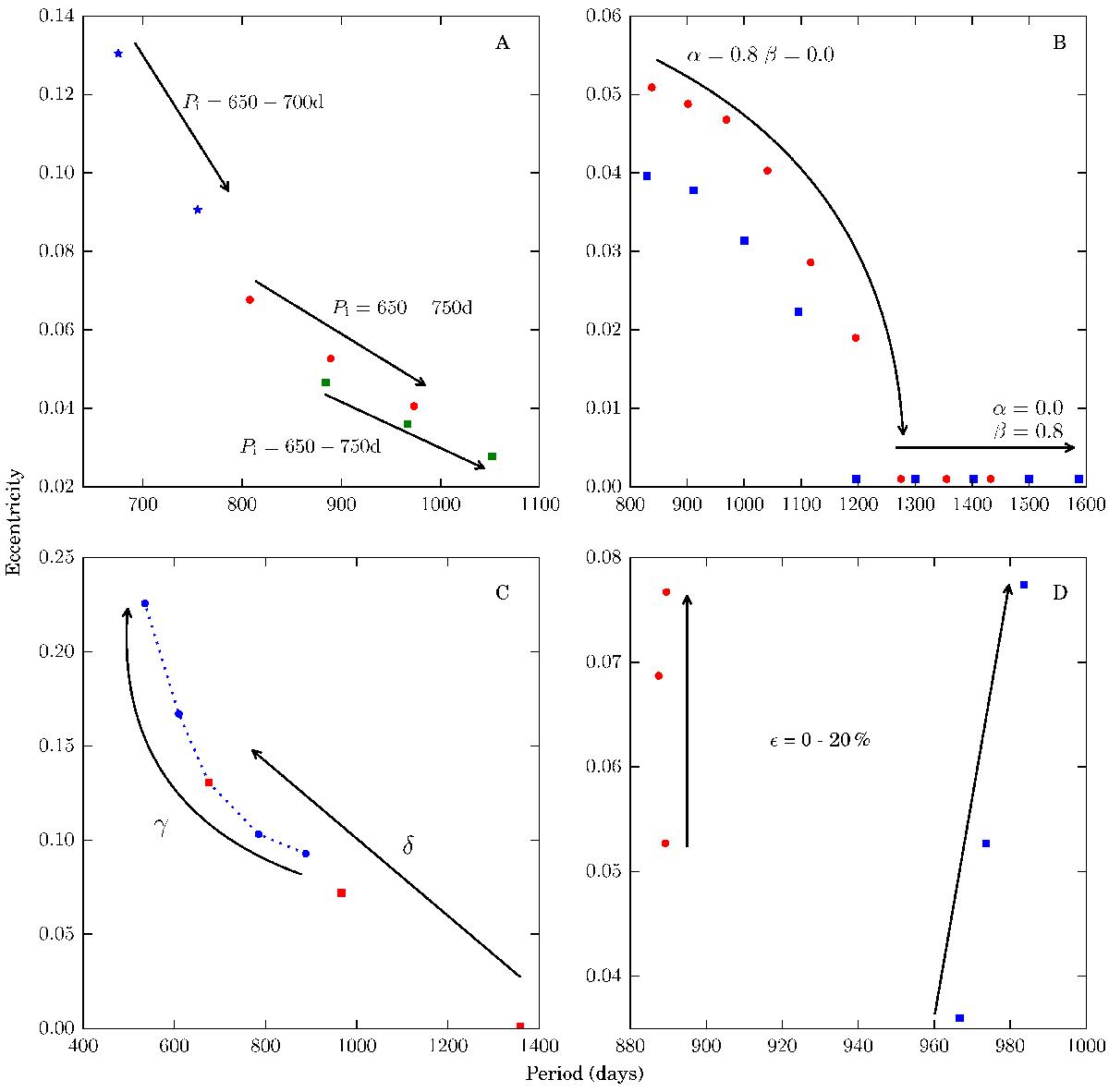Fig. 6

Effect of the initial and mass loss parameters of the RLOF models on the final period and eccentricity of the orbit. Panel A) Models with different initial periods (indicated by the black arrows) and different companion masses: Ma = 0.8 (blue stars), Ma = 1.0 (red dots) and Ma = 1.15 (green squares). Panel B) Models with different mass loss fractions α and β, for two companion masses: 1.0 M⊙ (red circles) and 1.15 M⊙ (blue squares). The black arrow indicates decreasing α and increasing β, δ is constant at 0.2. The sum of the mass loss fractions is unity for each model. Panel C) Models with different mass loss fractions δ: 0.1, 0.2 and 0.3, with γ = 1.12 (red squares) and different values for γ: 0.9, 1.0, 1.2 and 1.3 with δ = 0.3 (blue dots). These models don’t have accretion, thus α = β = (1 − δ) / 2. Panel D) The effect of the accreted fraction for two companion masses and accretion fractions of 0%, 10% and 20%. Ma = 1.0 M⊙ (red circles) and Ma = 1.15 M⊙ (blue squares). See Sects. 6.2.2 and 6.2.3 for discussion.
Current usage metrics show cumulative count of Article Views (full-text article views including HTML views, PDF and ePub downloads, according to the available data) and Abstracts Views on Vision4Press platform.
Data correspond to usage on the plateform after 2015. The current usage metrics is available 48-96 hours after online publication and is updated daily on week days.
Initial download of the metrics may take a while.


